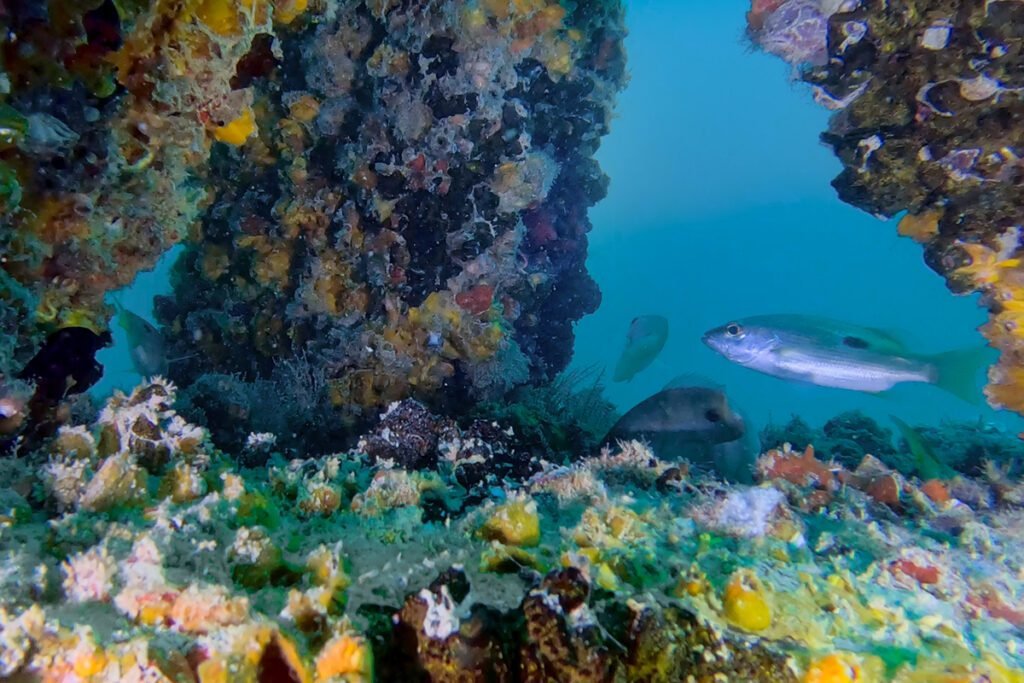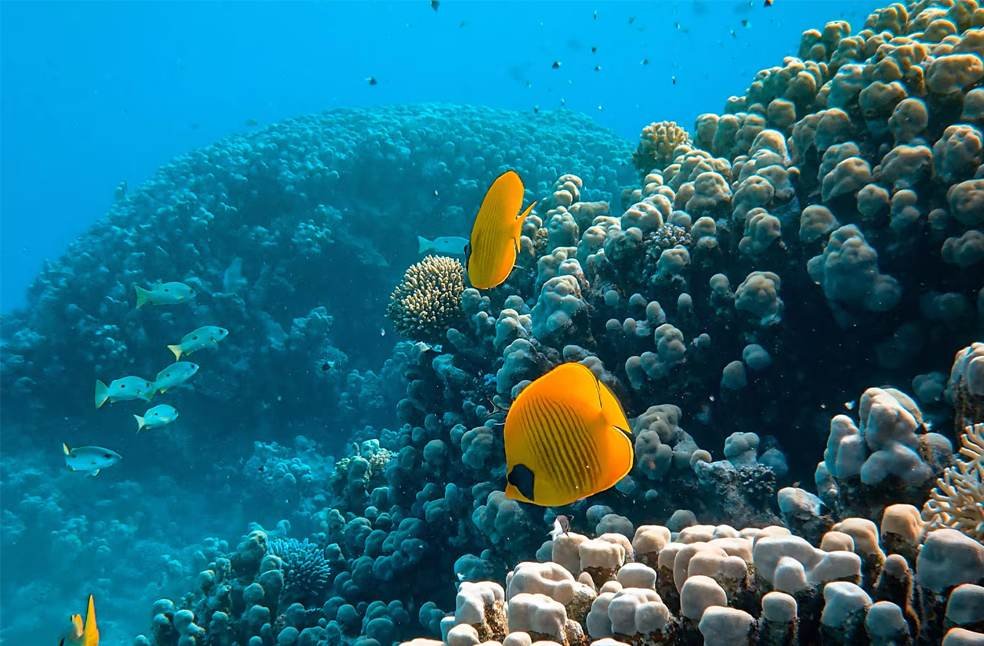The Dubai Reef project is one of the world’s most ambitious marine conservation and sustainability initiatives. As of mid-2025, the project has successfully deployed 3,660 reef modules along Dubai’s coastline. The final goal is to install 20,000 artificial reef structures by 2027, an effort that promises to revive marine ecosystems, improve biodiversity, and pave the way for more eco-tourism opportunities in the region.
In this article, we’ll explore the scale, science, and future vision behind the Dubai Reef project, why it matters not just to the UAE, but globally, and how this massive undertaking is setting a benchmark for environmental restoration worldwide.
What Is the Dubai Reef Project?
The Dubai Reef project is a large-scale marine restoration effort led by the Dubai Government and the Dubai Environment and Climate Change Authority. It involves deploying thousands of specially designed artificial reef modules into the Arabian Gulf to help regenerate marine life and protect the coastal environment.

This initiative is part of Dubai’s broader sustainability goals outlined in the UAE’s Year of Sustainability and supports national efforts like the Net Zero by 2050 Strategic Initiative. The project not only aims to enhance biodiversity but also works toward climate action and sustainable marine development.
Why Artificial Reefs Matter
Artificial reefs are human-made underwater structures designed to mimic natural reef systems. They offer a solid surface for corals to grow on and create shelter and feeding grounds for marine species.

Some of the major benefits of artificial reefs include:
- Habitat restoration for overfished or degraded areas
- Increased marine biodiversity, attracting fish, corals, mollusks, and other organisms
- Protection of natural reefs by reducing pressure from tourism and fishing
- Stabilizing coastal ecosystems, which helps in buffering against storms and coastal erosion
- Opportunities for eco-tourism, diving, and research
With the Gulf’s fragile marine ecosystem under pressure from climate change, overfishing, and coastal development, the Dubai Reef project comes at a crucial time.
Current Progress: 3,660 Modules Deployed
As of July 2025, the Dubai Reef project has deployed 3,660 reef modules. These modules are made of environmentally friendly, marine-grade concrete with a porous design that allows coral larvae to settle and grow.
Each module varies in size and shape, tailored to serve different depths and marine environments. Together, they cover significant underwater areas, forming artificial habitats similar to natural coral reefs.
The deployment is being carried out in phases, ensuring careful monitoring of ecological impact and biodiversity return.
Future Plans: 20,000 Modules by 2027
By 2027, the Dubai Reef project aims to deploy 20,000 reef modules, covering more than 600 square kilometers of underwater space, making it the largest marine reef development project of its kind in the world.
The plan includes:
- Expansion into deeper waters to attract a wider range of marine life
- Integration of coral planting and marine algae farming
- Underwater research stations for scientists
- Establishing eco-tourism dive zones and guided tours
- Monitoring systems using AI and marine drones to study reef health
This phased approach not only ensures proper marine adaptation but also helps researchers and policymakers measure the success and improve the deployment strategy over time.
Technology and Innovation Driving the Project
One of the standout features of the Dubai Reef project is its use of cutting-edge marine technology.
Some innovations being used include:
- 3D printing to design complex reef shapes that resemble natural coral structures
- AI-powered sensors to track temperature, salinity, and reef health
- Eco-friendly materials that do not leach chemicals and promote faster coral growth
- Marine-safe drones to inspect the reefs without disturbing wildlife
- Data modeling to identify optimal placement zones based on ocean currents and biodiversity density
These technologies help the reef not only survive but thrive, ensuring long-term ecological balance.

Environmental and Economic Impact
Environmental Benefits
The Dubai Reef project aims to create sustainable marine ecosystems. Expected environmental impacts include:
- An increase in native fish populations like groupers, snappers, and reef sharks
- Restoration of coral and algae populations that have declined due to warming waters
- Reduction in coastal erosion thanks to reef-induced wave breaking
- Support for seagrass and mangrove ecosystems, indirectly benefiting turtles and dugongs
Economic Impact
The economic potential is equally promising. Artificial reefs often lead to increased:
- Fishing opportunities due to higher fish stock levels
- Tourism and diving revenue from eco-conscious travelers
- Job creation in marine research, conservation, and tourism sectors
- Local seafood industry growth, providing sustainable harvesting zones
Dubai aims to make the reef a magnet for divers, marine biologists, and sustainability-driven tourists, positioning the city as a leader in marine conservation tourism.
Community Engagement and Education
Dubai is ensuring that the reef is not just an underwater infrastructure project, but a community-involved mission.
Initiatives include:
- School programs and university partnerships to educate the next generation about marine conservation
- Citizen science initiatives where residents can help monitor the reef through diving and photography
- Public awareness campaigns tied to the Year of Sustainability
- Interactive exhibits at aquariums and museums highlighting the reef’s progress
By involving the public, the project builds long-term social support and inspires sustainable behavior at all levels.
Dubai Reef and Global Climate Goals
The Dubai Reef project aligns with global sustainability goals, particularly:
- United Nations SDG 14 (Life Below Water), conserving and sustainably using oceans, seas, and marine resources
- Paris Climate Agreement, promoting carbon sinks like reefs and algae farms
- UN Decade on Ecosystem Restoration (2021–2030), one of the world’s leading ecosystem restoration movements
Dubai’s initiative sets an example for coastal cities worldwide on how to combine development, climate action, and marine conservation.

Challenges and Considerations
No project of this scale comes without challenges. Some key considerations include:
- Marine traffic and shipping lanes interfering with reef zones
- Ensuring reef modules are anchored safely during storms
- Monitoring for invasive species that may colonize the artificial reefs
- Balancing tourism pressure with ecological preservation
- Continuous funding and long-term maintenance costs
Dubai has responded with comprehensive planning, ongoing risk assessments, and partnerships with international marine experts.
Voices Behind the Vision
Officials behind the Dubai Reef project, such as the Dubai Municipality and the Ministry of Climate Change and Environment, emphasize that this is not just an environmental project, but a national legacy.
In a recent statement, a senior official said:
“The Dubai Reef is a statement of intent. It shows the world that urban growth and ecological responsibility can go hand in hand. It’s our gift to future generations.”
Conclusion: A Bold Step Toward a Greener Future
The Dubai Reef project represents more than just artificial reef deployment. It’s a holistic approach to environmental stewardship, economic resilience, and climate responsibility.
With 3,660 modules already deployed and plans for 20,000 by 2027, Dubai is taking a bold step toward restoring marine biodiversity and setting a new global standard for coastal sustainability.
As the reef continues to grow, it will serve not only as a thriving marine habitat but also as a living symbol of the UAE’s commitment to a greener, more sustainable future, above and below the waterline.
Do follow UAE Stories on Instagram
Read More: Israel Eyes Sixth-Gen F-47 Fighter Jet to Maintain Military Superiority














